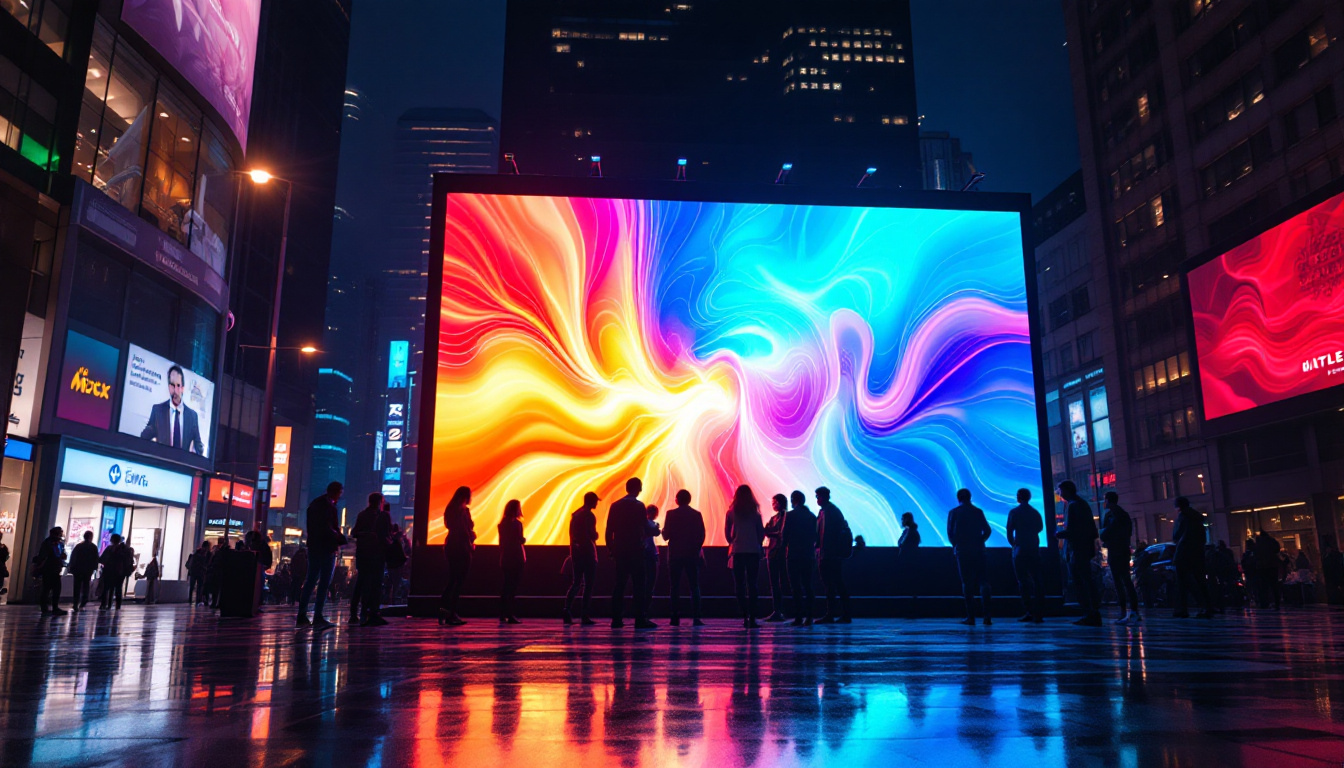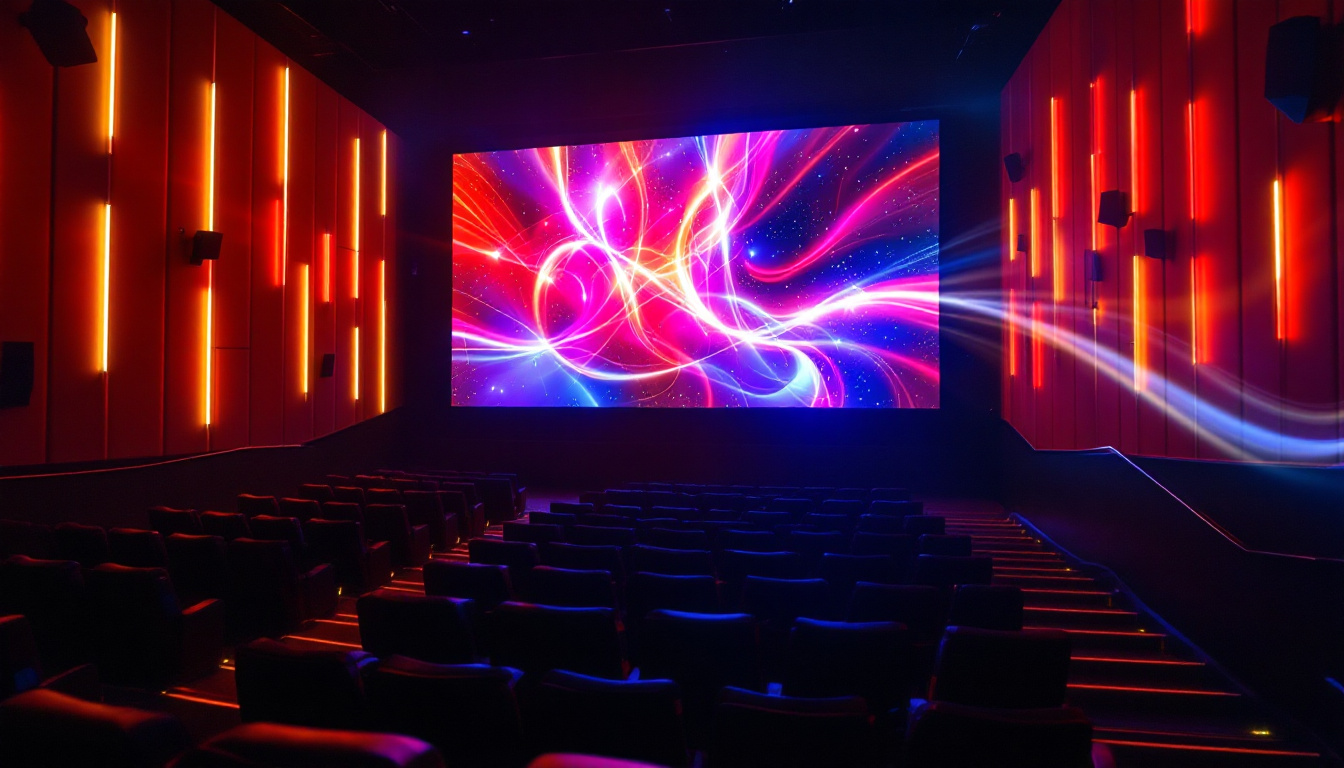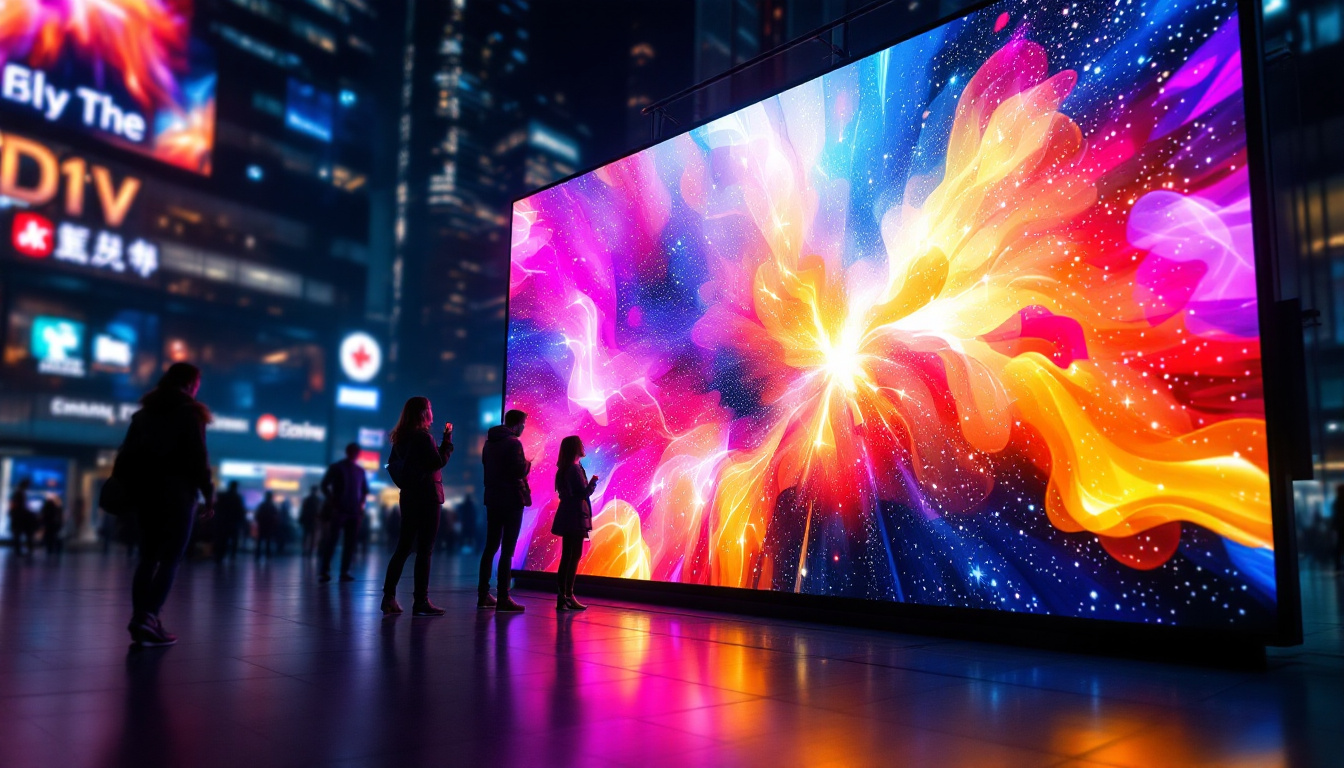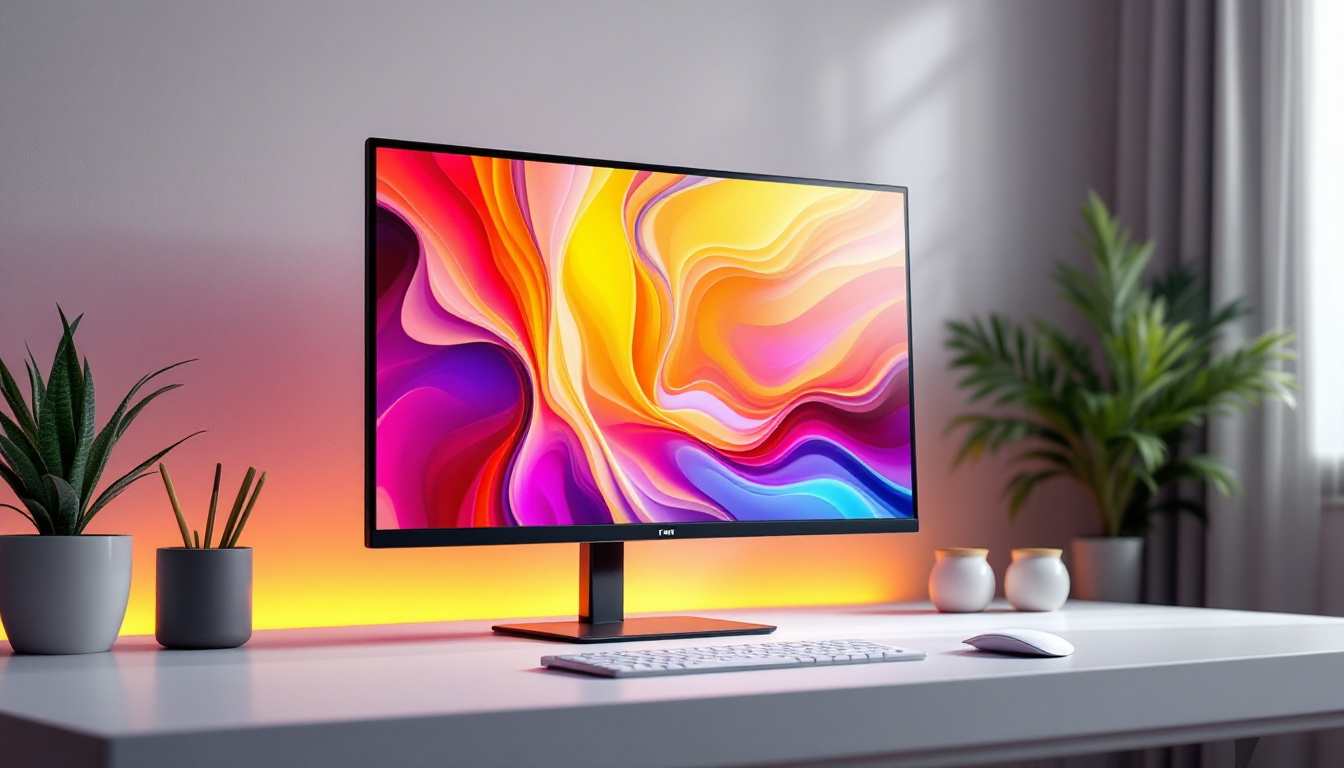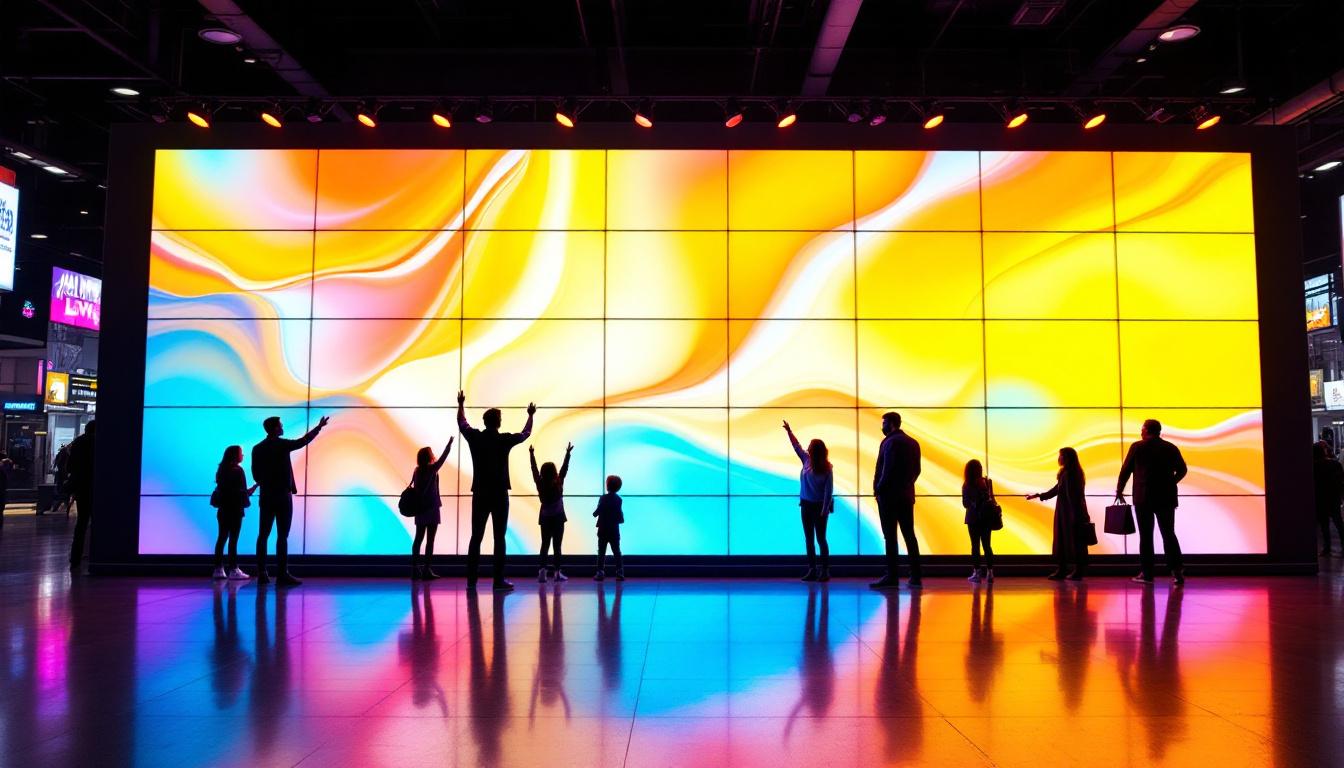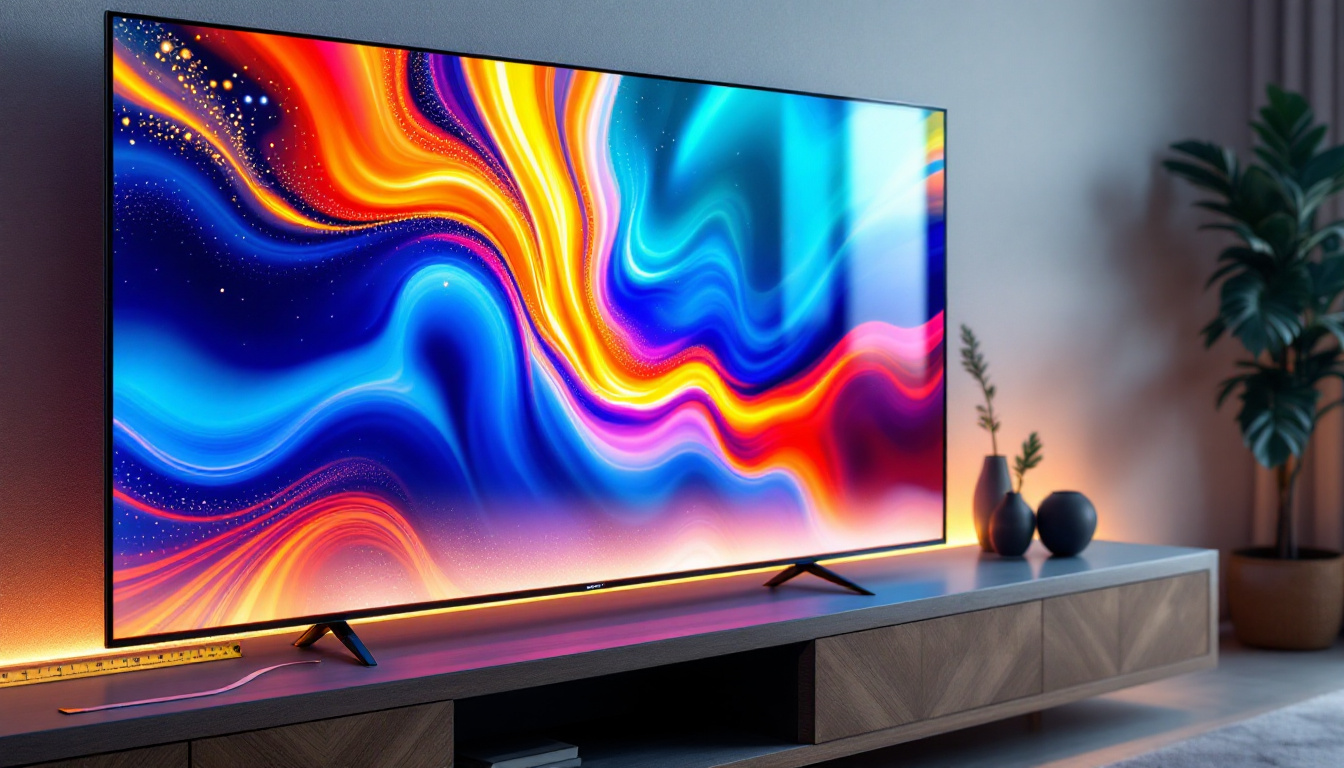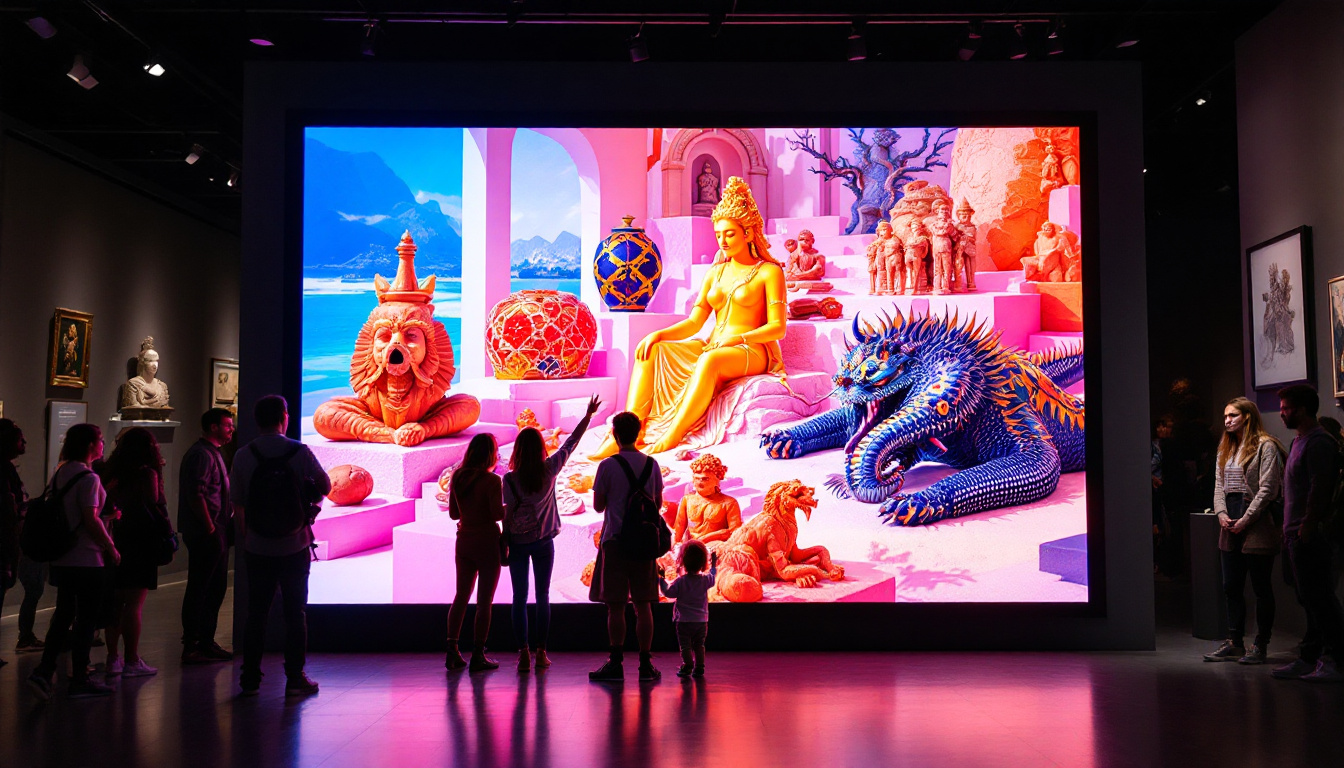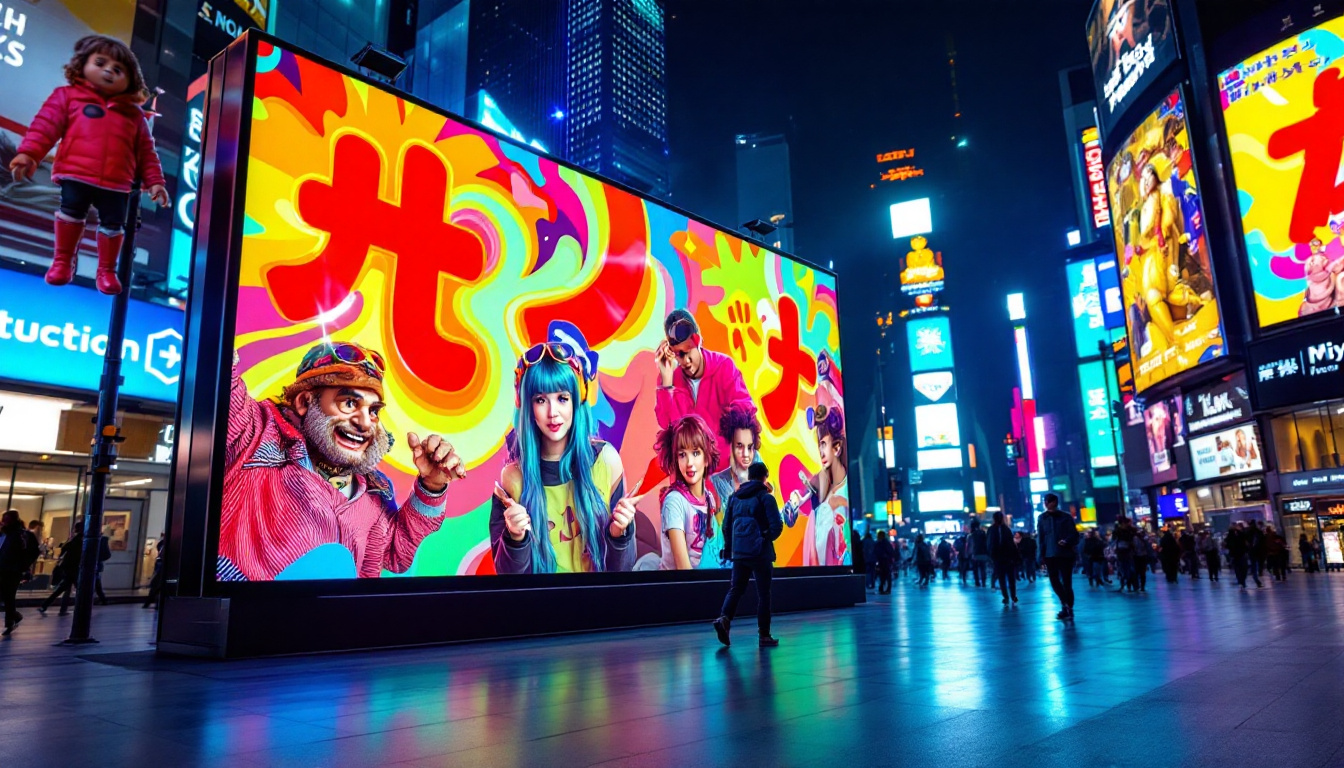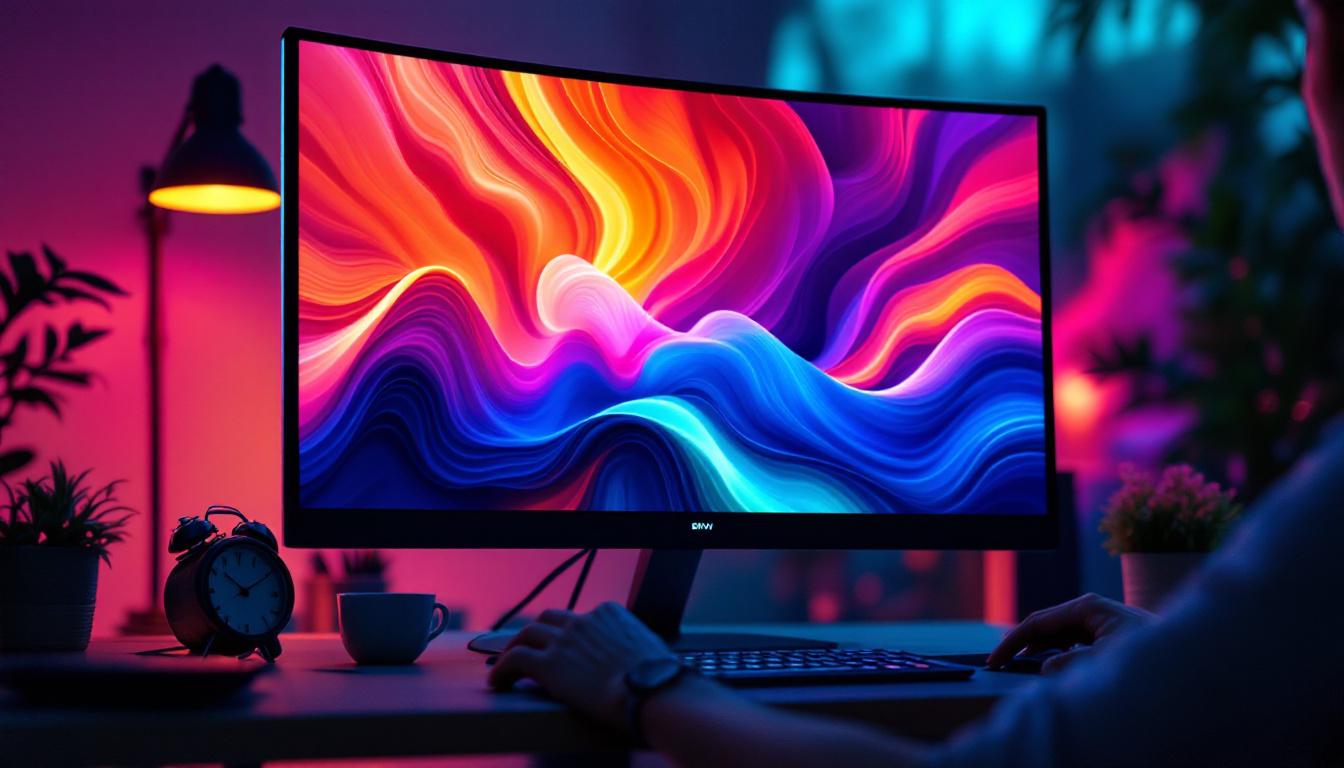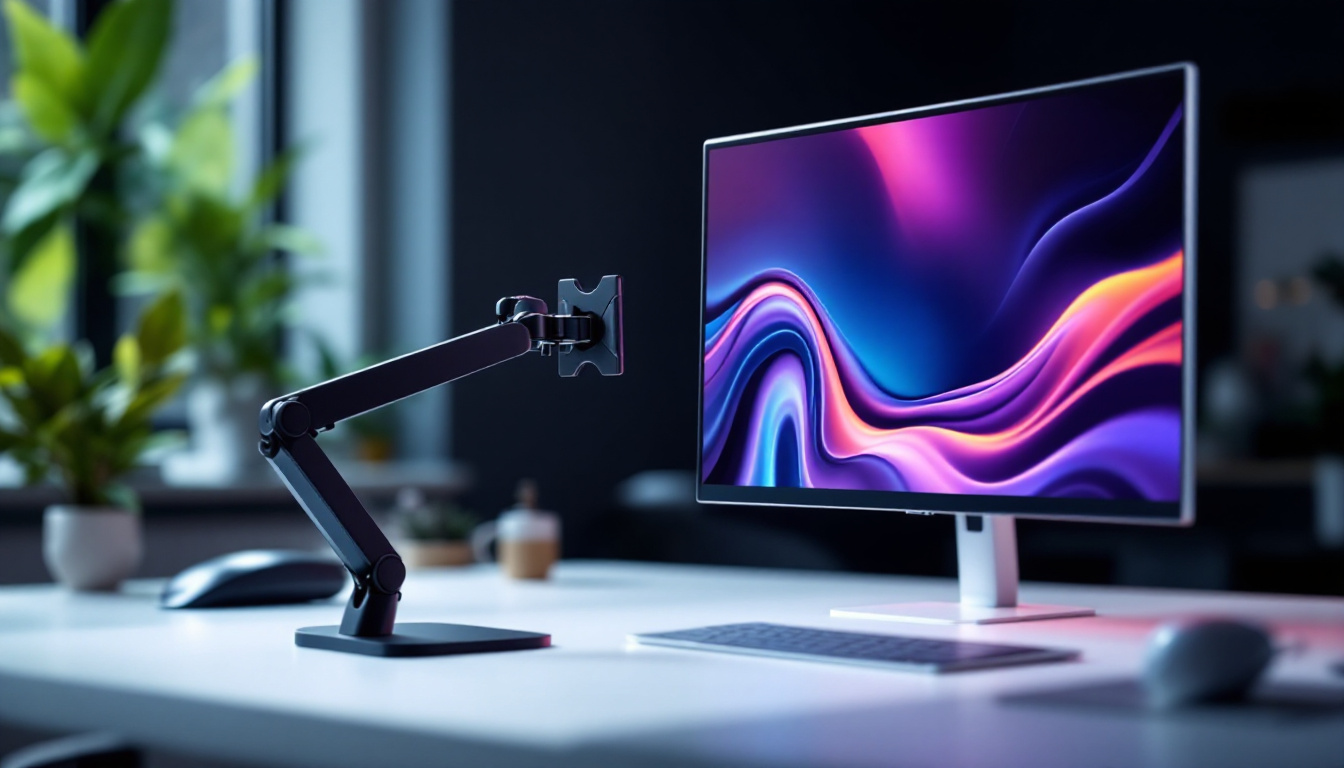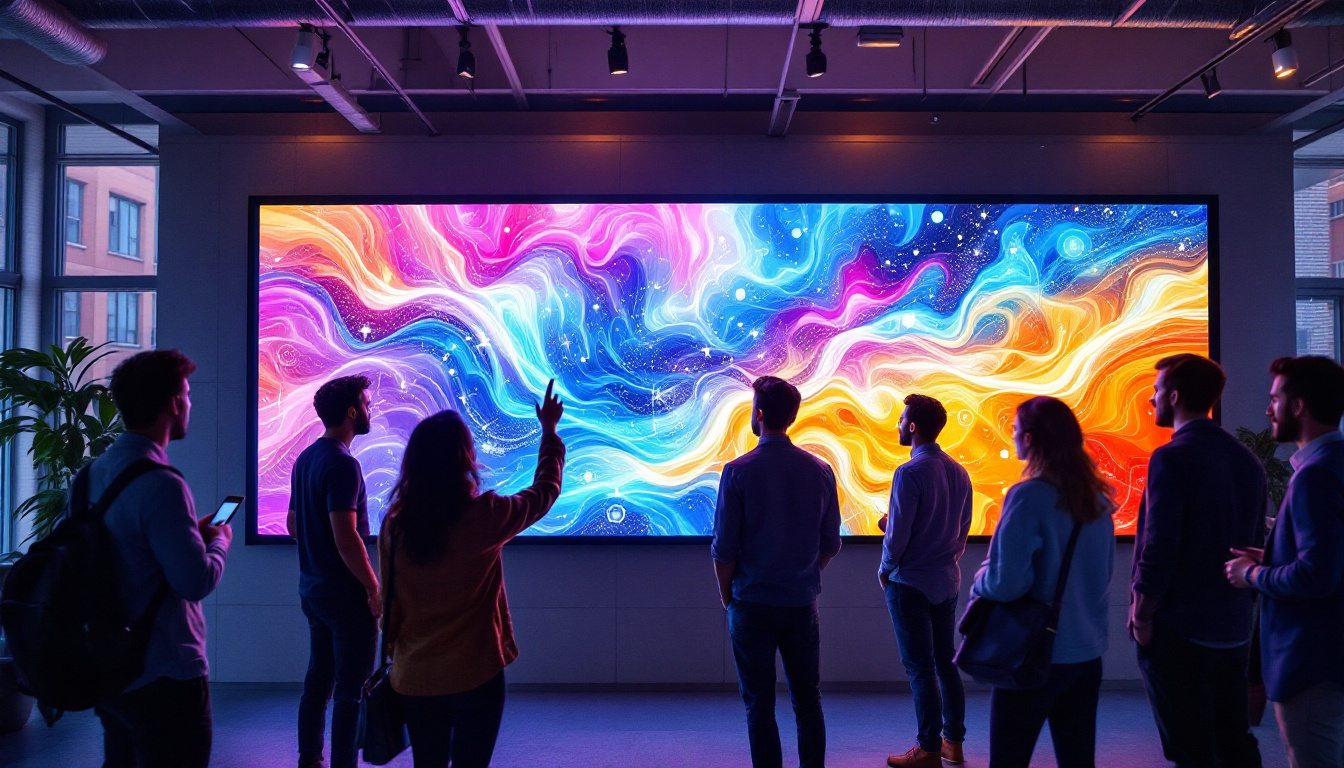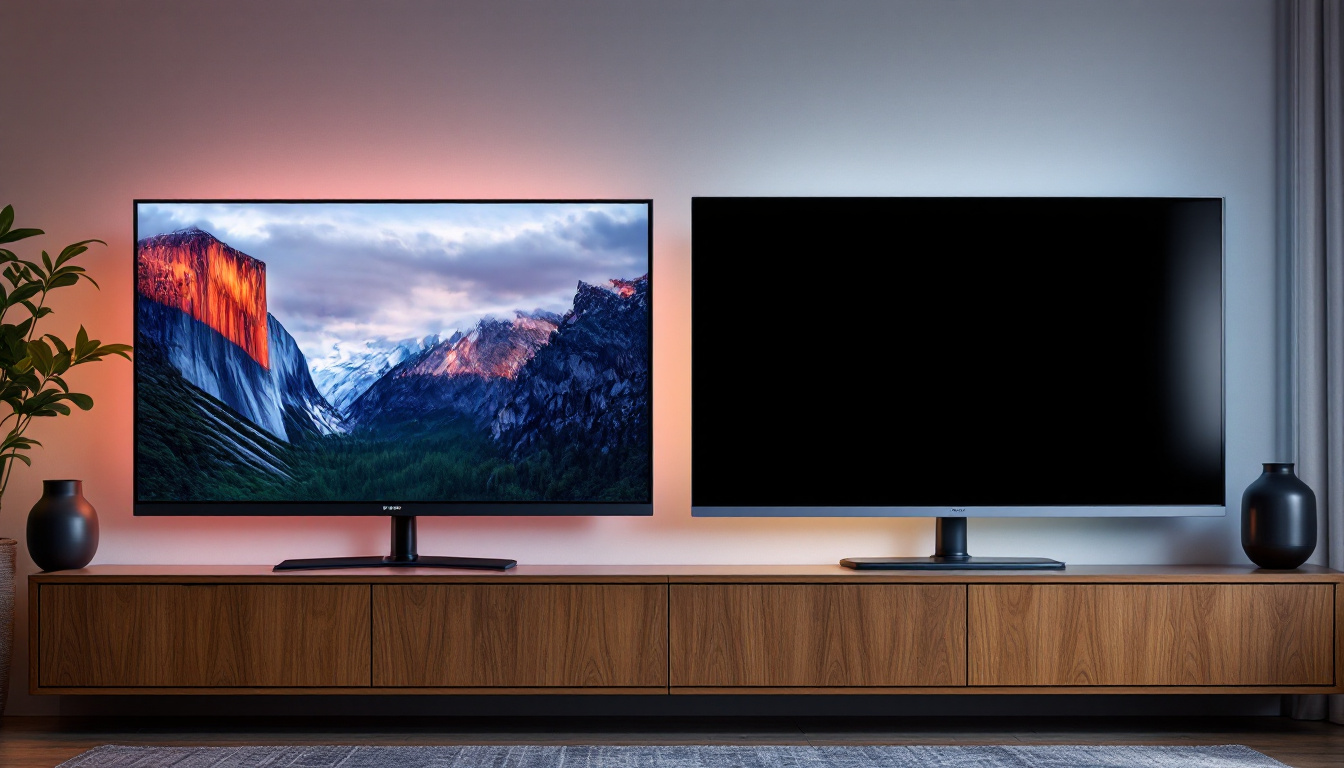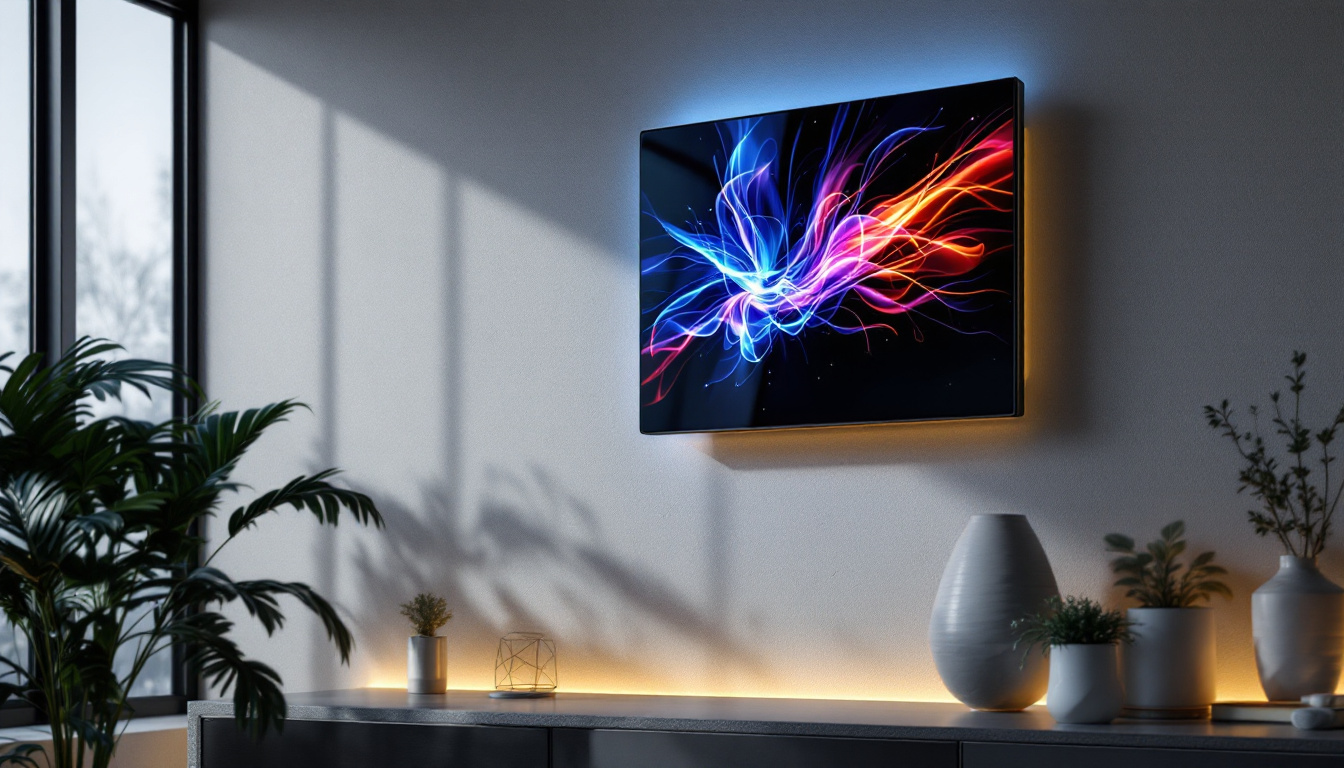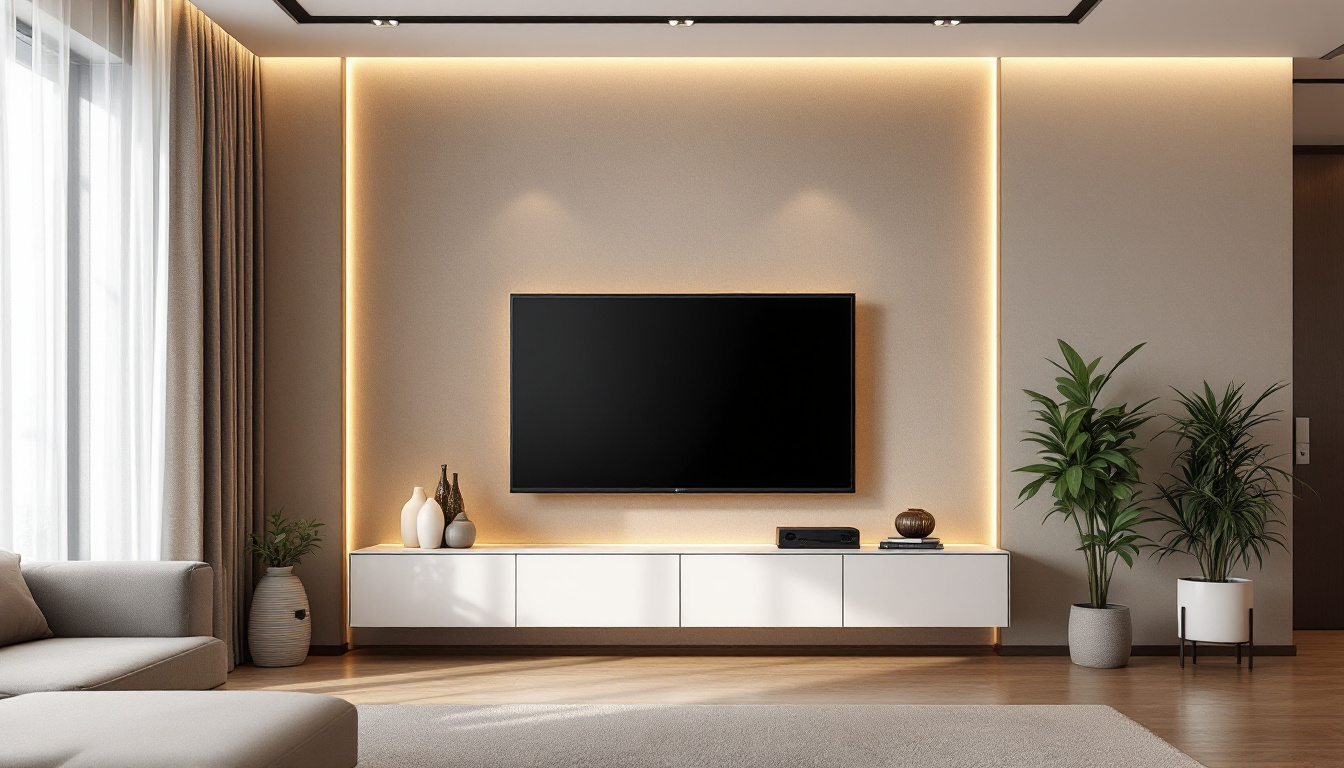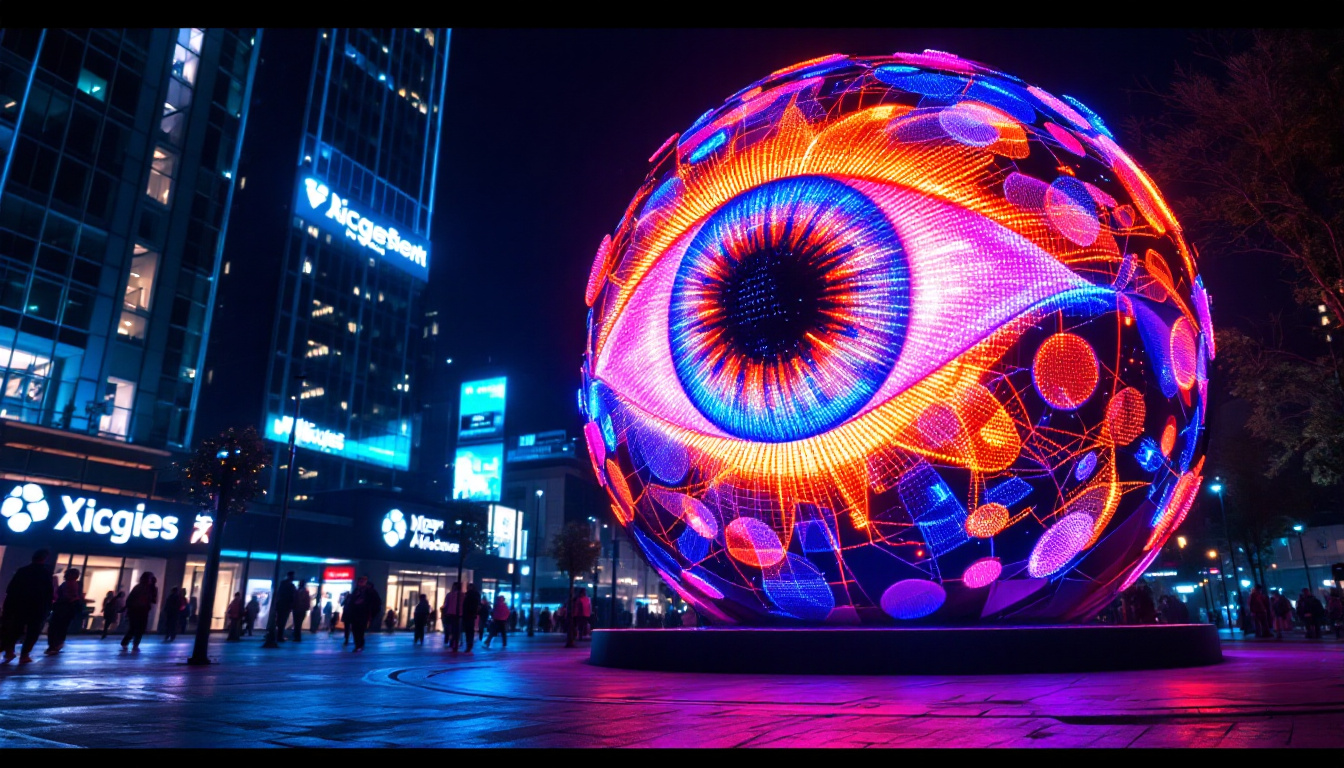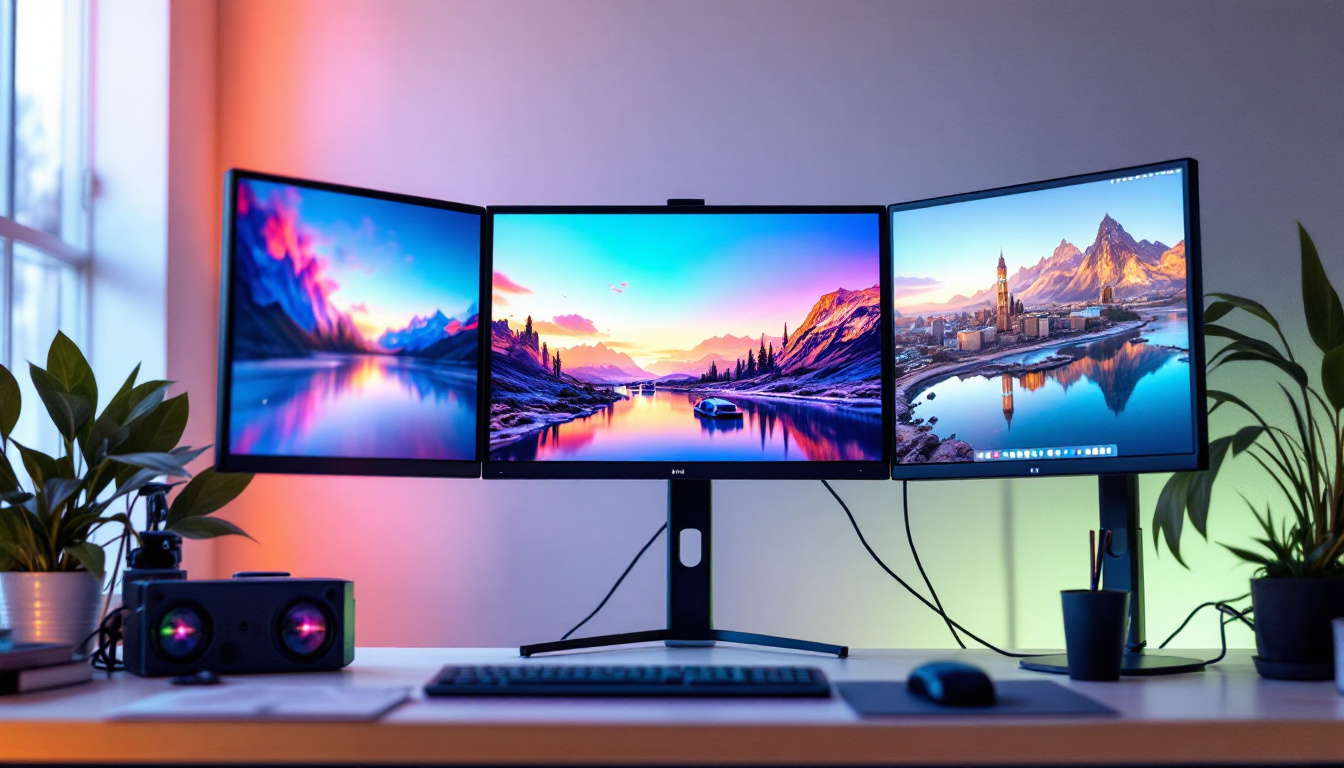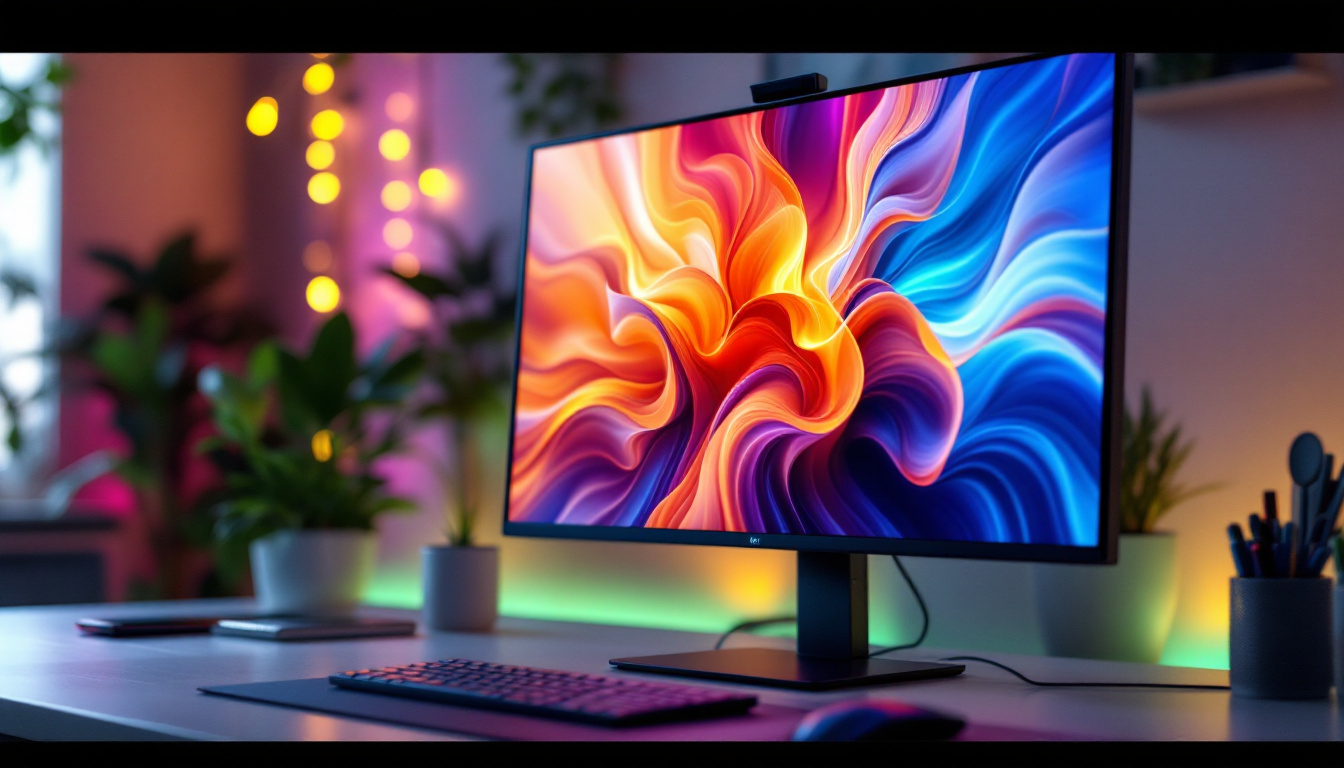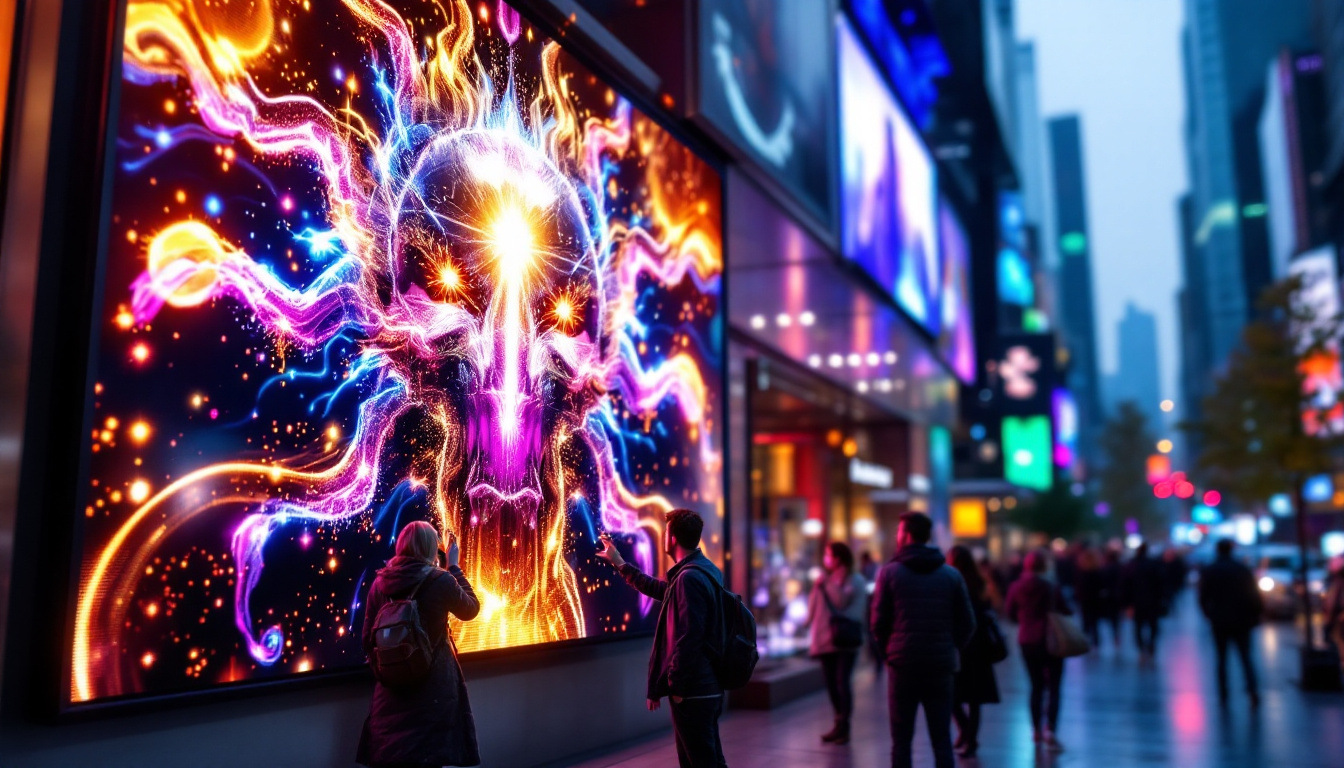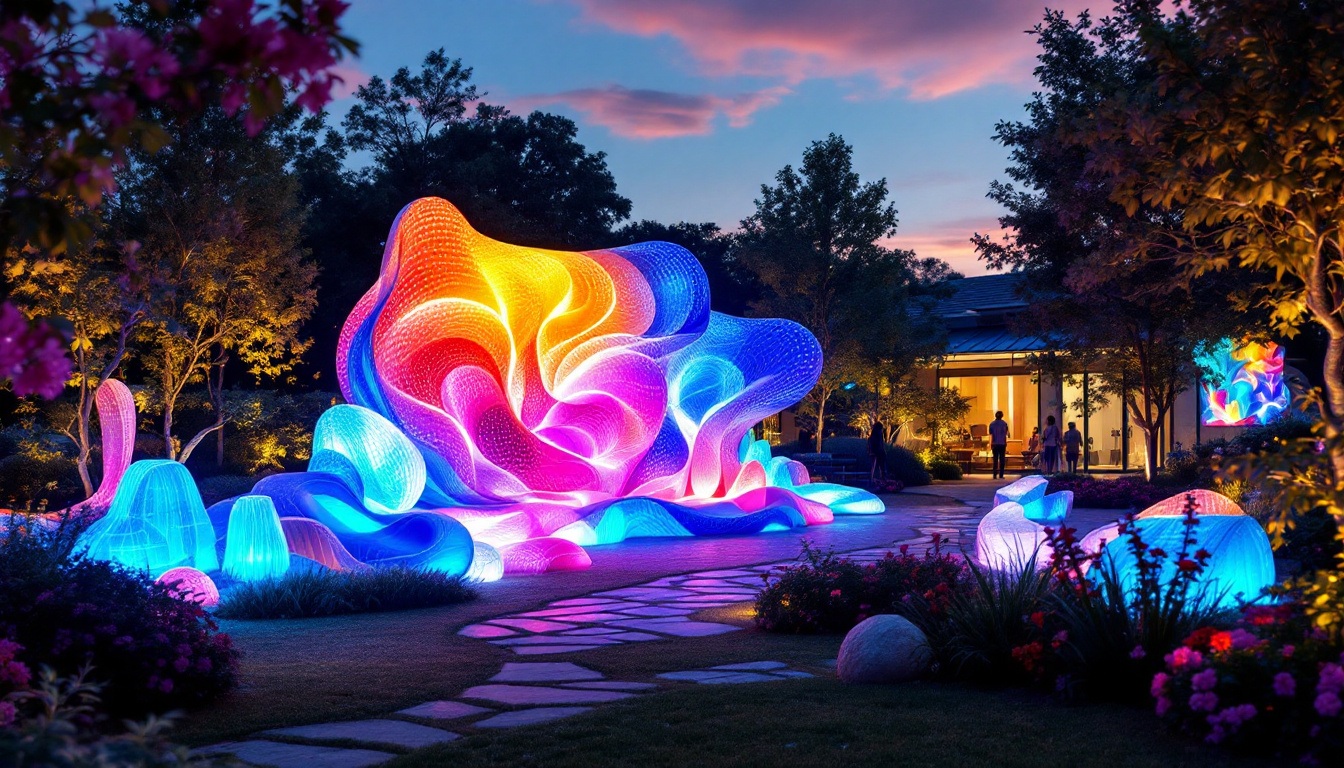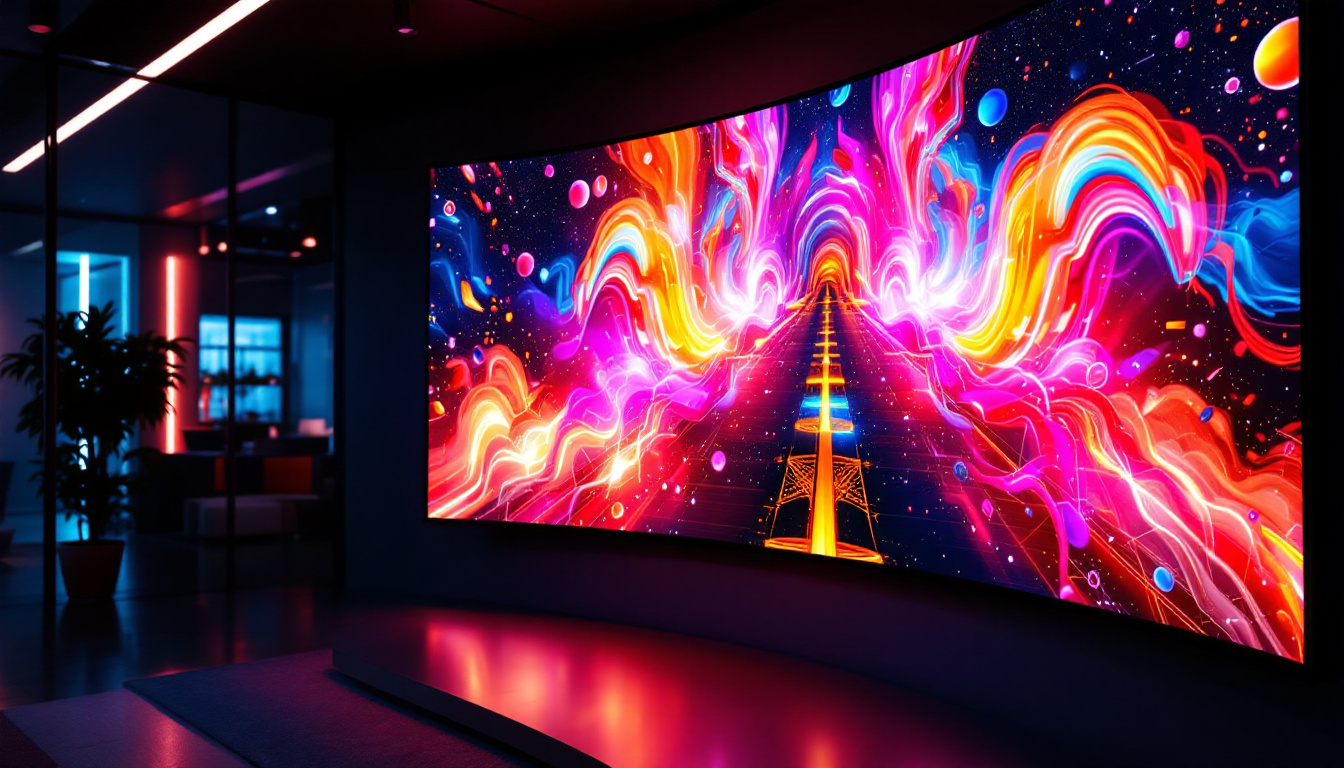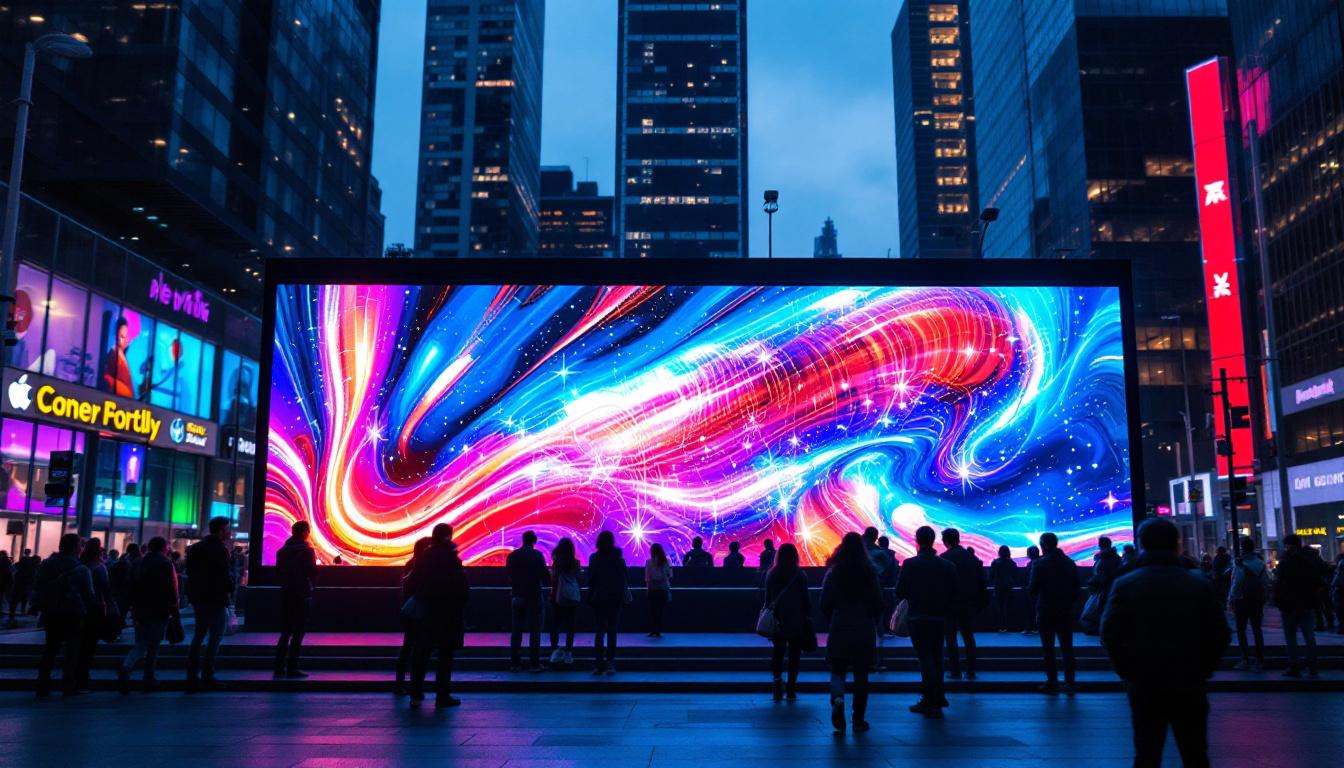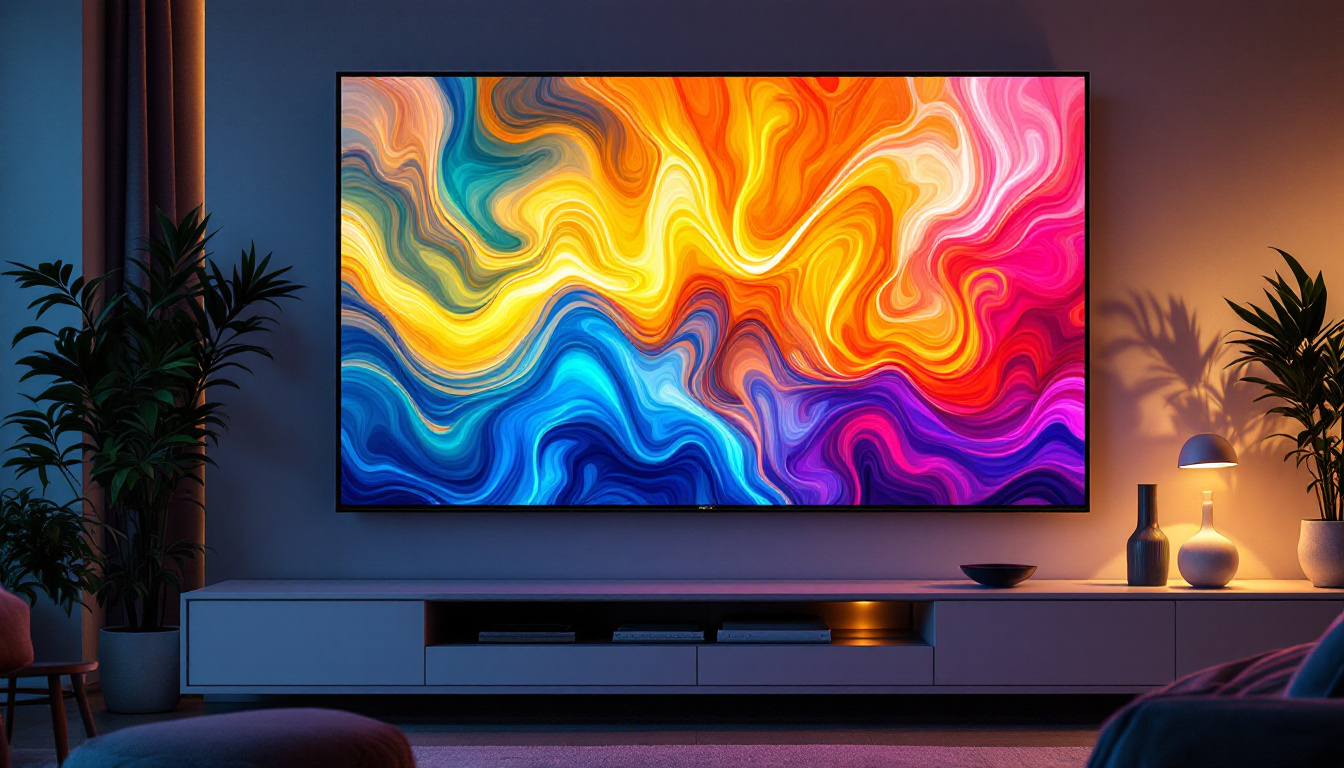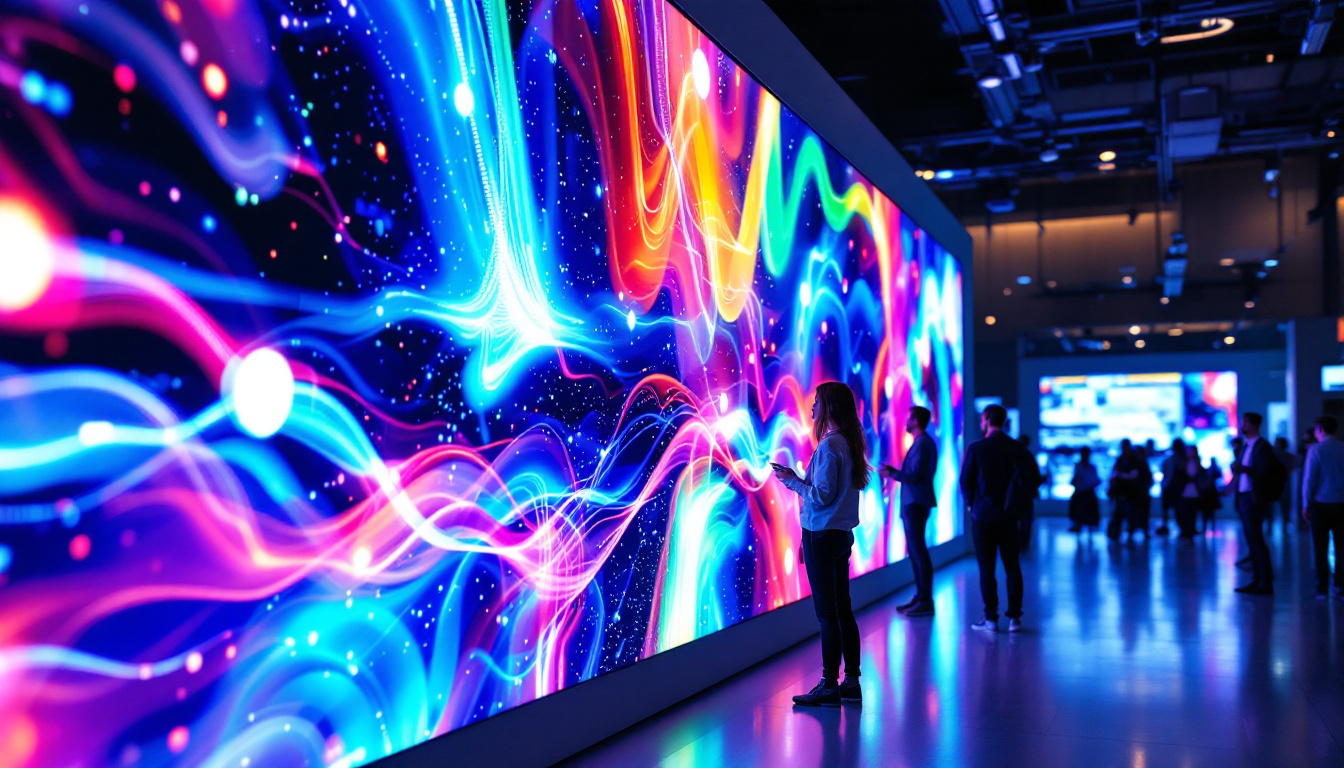In recent years, LED panel TV walls have emerged as a popular choice for both commercial and residential spaces. They offer vibrant colors, high brightness, and the ability to create stunning visual displays. This article delves into the intricacies of LED display technology, exploring its benefits, applications, and the factors to consider when investing in an LED panel TV wall.
Understanding LED Technology
LED, or Light Emitting Diode, technology has revolutionized the way we view images and videos. Unlike traditional display technologies, LED panels utilize tiny diodes to produce light, resulting in sharper images and more vibrant colors. This section will explore the fundamental aspects of LED technology and how it differs from other display types.
How LED Panels Work
LED panels consist of a matrix of LEDs that work together to create images. Each pixel is made up of red, green, and blue (RGB) diodes, which combine to produce a wide range of colors. When an electrical current passes through these diodes, they emit light, which can be controlled to display various images and videos.
One of the key advantages of LED technology is its efficiency. LED panels consume significantly less power than traditional display technologies, such as LCD or plasma screens. This not only reduces energy costs but also contributes to a lower carbon footprint, making LED panels an environmentally friendly option. Furthermore, the longevity of LED lights—often lasting up to 50,000 hours—means less frequent replacements, which is both cost-effective and reduces waste.
Types of LED Displays
There are several types of LED displays available, each with its unique features and applications. The most common types include:
- Direct View LED (DVLED): These displays consist of individual LED modules that can be assembled to create large video walls. They are known for their high brightness and excellent color accuracy.
- LED-backlit LCD: This type uses LED lights to illuminate an LCD panel. While not as vibrant as direct view LED displays, they are more affordable and widely used in consumer electronics.
- Organic LED (OLED): OLED technology uses organic compounds to emit light. It offers better contrast and color reproduction but is generally more expensive than traditional LED displays.
In addition to these common types, there are also specialized LED displays designed for specific environments. For instance, outdoor LED displays are built to withstand harsh weather conditions, featuring robust casings and higher brightness levels to ensure visibility even in direct sunlight. On the other hand, indoor LED displays are often designed with finer pixel pitches, allowing for closer viewing distances without sacrificing image quality. This versatility makes LED technology suitable for a wide range of applications, from advertising billboards to high-end home theaters.
Moreover, the integration of smart technology into LED displays has opened up new avenues for interactivity and user engagement. Many modern LED screens come equipped with touch capabilities, enabling users to interact directly with the content. This feature is particularly useful in retail environments, where customers can explore products and services in a dynamic and engaging manner. Additionally, advancements in software have allowed for seamless content management, enabling businesses to update their displays in real-time, ensuring that the information presented is always current and relevant.
Benefits of LED Panel TV Walls
LED panel TV walls offer numerous advantages that make them an attractive option for various applications. From enhanced visual experiences to cost savings, the benefits are compelling for businesses and homeowners alike.
Superior Image Quality
One of the most significant advantages of LED panel TV walls is their superior image quality. The ability to produce bright, vibrant colors and deep blacks enhances the viewing experience. This is particularly important in environments where visual impact is crucial, such as retail spaces, conference rooms, and entertainment venues.
Additionally, LED panels maintain consistent image quality across different viewing angles, ensuring that everyone in the room enjoys the same visual experience. This characteristic is especially beneficial for large audiences, where traditional displays may struggle to deliver uniformity.
Scalability and Flexibility
LED panel TV walls are highly scalable, allowing users to create displays of various sizes and configurations. Whether a small installation for a home theater or a massive wall for a stadium, LED panels can be customized to fit any space. This flexibility makes them suitable for a wide range of applications, from advertising to live events.
Moreover, the modular nature of LED panels means that they can be easily expanded or reconfigured as needs change. This adaptability ensures that investments in LED technology remain relevant for years to come.
Low Maintenance and Longevity
LED panels are known for their durability and long lifespan. With proper care, they can last up to 100,000 hours, significantly outlasting traditional display technologies. This longevity translates to lower maintenance costs and fewer replacements over time.
Additionally, LED panels are less prone to screen burn-in, a common issue with other display types. This resilience makes them ideal for applications that require continuous use, such as digital signage and broadcasting.
Applications of LED Panel TV Walls
The versatility of LED panel TV walls allows them to be used in a variety of settings. From commercial enterprises to personal use, the applications are nearly limitless. This section highlights some of the most common uses for LED displays.
Commercial Use
In the commercial sector, LED panel TV walls are widely used for advertising and branding. Retailers utilize these displays to showcase promotions, product launches, and engaging content that captures the attention of potential customers. The bright and dynamic nature of LED panels makes them particularly effective in attracting foot traffic.
Moreover, corporate environments leverage LED displays for presentations, video conferencing, and training sessions. The ability to present high-quality visuals enhances communication and collaboration among team members, leading to more productive meetings.
Entertainment and Events
LED panel TV walls have become a staple in the entertainment industry. Concerts, festivals, and sporting events utilize large LED displays to provide audiences with immersive experiences. These screens can display live feeds, graphics, and animations, enhancing the overall atmosphere of the event.
Additionally, theaters and cinemas are increasingly adopting LED technology for their screens. The superior image quality and brightness of LED panels create a more engaging viewing experience, drawing audiences into the story being told on screen.
Home Use
In residential settings, LED panel TV walls are becoming increasingly popular for home theaters and gaming setups. The ability to create a large, immersive display enhances the enjoyment of movies, sports, and video games. Homeowners can customize their LED walls to fit their style and preferences, making them a focal point of entertainment in the home.
Furthermore, as smart home technology continues to evolve, LED panels can be integrated with home automation systems, allowing users to control lighting, sound, and visuals seamlessly.
Factors to Consider When Choosing an LED Panel TV Wall
Investing in an LED panel TV wall is a significant decision that requires careful consideration. Several factors influence the choice of an LED display, and understanding these can help ensure that the right product is selected for specific needs.
Resolution and Pixel Pitch
Resolution is a critical factor in determining the quality of an LED display. Higher resolutions offer clearer images and finer details, making them ideal for close viewing distances. Pixel pitch, which refers to the distance between the centers of two adjacent pixels, also plays a vital role in image quality. A smaller pixel pitch results in a higher resolution and better image clarity.
When selecting an LED panel, it is essential to consider the intended viewing distance. For example, a display meant for a large audience in a stadium may have a larger pixel pitch than one designed for a small conference room.
Brightness and Contrast Ratio
Brightness is another crucial factor to consider, especially for outdoor applications where ambient light can affect visibility. LED panels are available in various brightness levels, measured in nits. A higher brightness level ensures that the display remains visible even in bright environments.
Contrast ratio, which measures the difference between the darkest and brightest parts of an image, also impacts the overall viewing experience. A higher contrast ratio results in more vibrant colors and deeper blacks, enhancing image quality.
Installation and Maintenance
The installation process for LED panel TV walls can vary depending on the size and configuration of the display. It is essential to consider the available space and the expertise required for installation. Professional installation may be necessary to ensure that the display is set up correctly and safely.
Maintenance is another aspect to keep in mind. While LED panels are generally low-maintenance, regular cleaning and inspections are necessary to keep them functioning optimally. Understanding the maintenance requirements can help avoid unexpected costs and downtime.
Conclusion
LED panel TV walls represent a significant advancement in display technology, offering unparalleled image quality, versatility, and efficiency. Their applications span various industries, making them an essential tool for businesses and individuals alike. When considering an investment in an LED display, it is crucial to evaluate factors such as resolution, brightness, and installation requirements to ensure the best choice is made.
As technology continues to evolve, LED panel TV walls will likely become even more prevalent, enhancing visual experiences across numerous settings. Whether for commercial use, entertainment, or personal enjoyment, LED displays are poised to remain at the forefront of visual technology for years to come.
Discover LumenMatrix’s Innovative LED Solutions
Ready to elevate your visual experience with cutting-edge LED technology? Look no further than LumenMatrix, a leader in crafting dynamic and engaging LED displays. From vibrant Indoor and Outdoor LED Wall Displays to versatile solutions like Vehicle LED Displays, LED Posters, and even Custom LED Displays, LumenMatrix is committed to revolutionizing visual communication. Whether you’re looking to captivate audiences, enhance brand visibility, or create immersive environments, our range of products, including All-in-One and Transparent LED Displays, is designed to meet your needs. Don’t miss the opportunity to transform your space with our advanced LED solutions. Check out LumenMatrix LED Display Solutions today and step into the future of visual storytelling.


